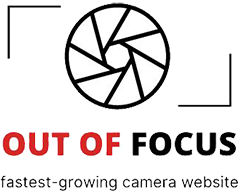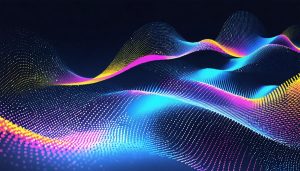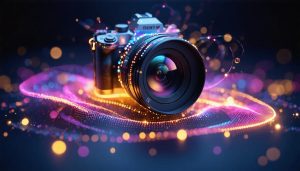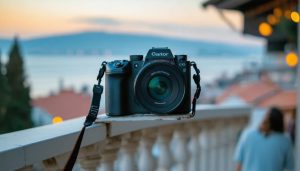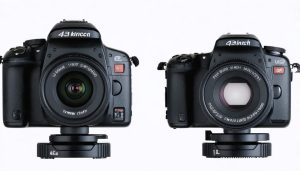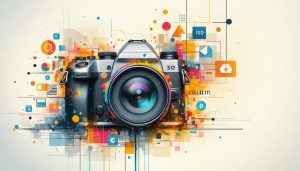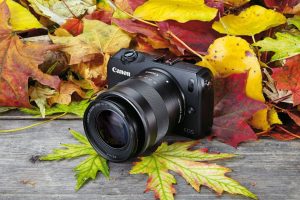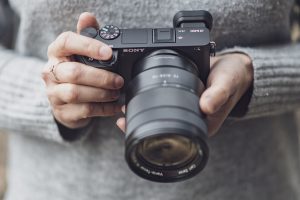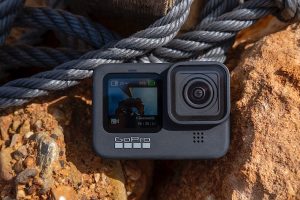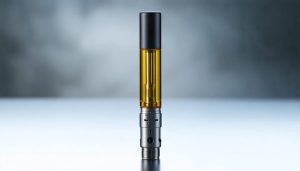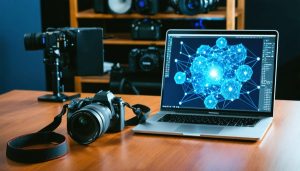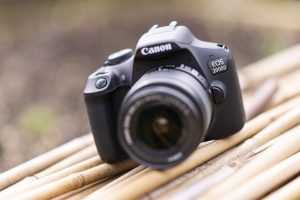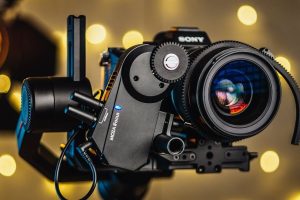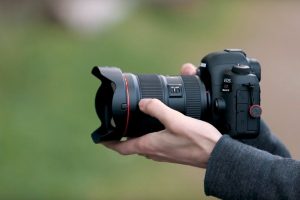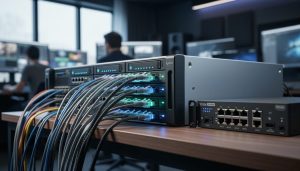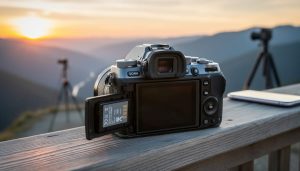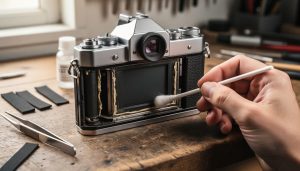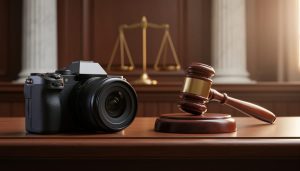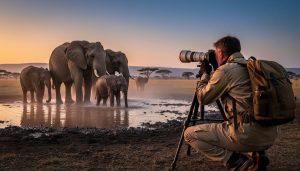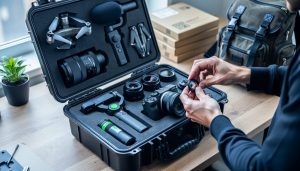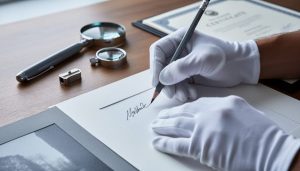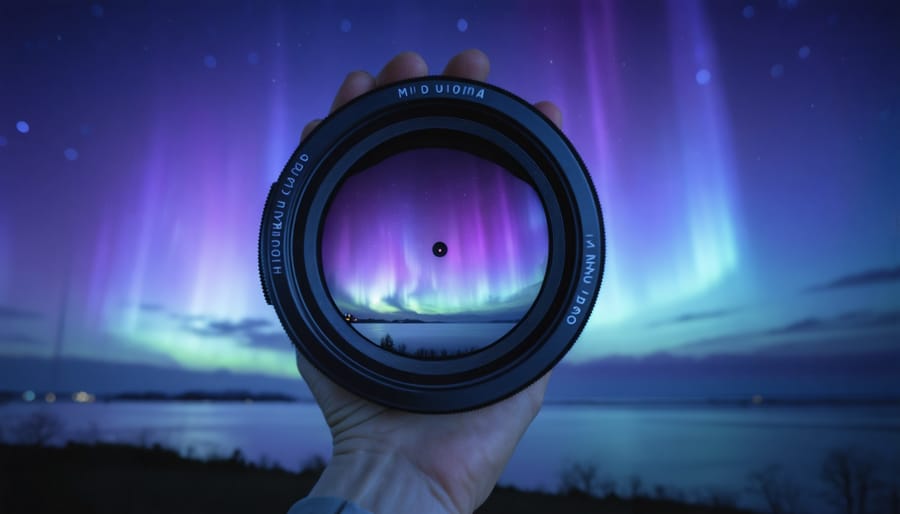
Quantum sensors are revolutionizing photography by detecting individual photons with unprecedented precision, offering photographers capabilities that were once confined to science fiction. These atomic-scale detectors, operating on quantum mechanical principles, can capture images in near-total darkness and measure light wavelengths with extraordinary accuracy that traditional CMOS and CCD sensors simply cannot match.
For professional photographers, quantum sensing technology represents a paradigm shift in low-light performance and color accuracy. Imagine capturing the aurora borealis with perfect detail in real-time, or photographing nocturnal wildlife without artificial lighting that disturbs their natural behavior. These applications are already emerging in specialized cameras, with quantum-enhanced sensors detecting subtle variations in electromagnetic fields that traditional equipment misses entirely.
Beyond pure photography, quantum sensors are finding applications in medical imaging, autonomous vehicle navigation, and scientific research. Their ability to detect minute changes in magnetic fields, temperature, and electric signals opens new creative possibilities for artistic expression while simultaneously advancing technical capabilities in professional photography.
As this technology transitions from research labs to commercial cameras, photographers stand at the threshold of a new era where the boundaries between what we can and cannot capture are being fundamentally redefined.
Understanding Quantum Sensors in Modern Photography
The Quantum Advantage in Light Detection
When it comes to detecting light, quantum sensors represent a quantum leap forward from traditional camera sensors. The magic lies in how quantum dot sensor technology leverages the principles of quantum mechanics to capture light with unprecedented precision.
Think of traditional sensors as workers counting raindrops in a bucket, while quantum sensors can detect individual photons – the smallest possible particles of light. This extraordinary sensitivity means they can produce clear images in conditions where conventional sensors would only capture noise and darkness.
What makes this truly remarkable for photographers is the ability to shoot in extremely low-light situations without compromising image quality. Instead of amplifying an already weak signal (which introduces noise), quantum sensors can detect the faintest light signals directly. This translates to cleaner night shots, better star photography, and the ability to capture fast-moving subjects in challenging lighting conditions.
The improved accuracy also means better color reproduction and dynamic range, as these sensors can distinguish between subtle variations in light intensity that traditional sensors might miss.
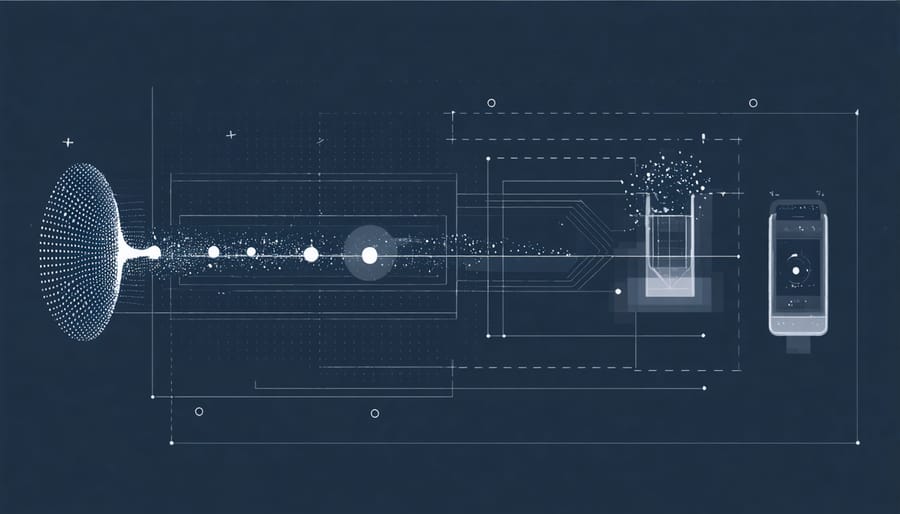
From Theory to Practice: Real-World Applications
Quantum sensor technology is already making waves in real-world camera applications, particularly in smartphone photography. The latest iPhone models incorporate quantum dot technology in their displays, enhancing color accuracy and brightness. In professional photography, companies like Sony and Samsung are developing quantum image sensors that can detect individual photons, revolutionizing low-light photography.
One striking example is the development of single-photon cameras that can literally see around corners by detecting scattered light particles. These cameras are being tested in autonomous vehicles to improve safety and navigation in challenging conditions. Medical imaging is another field benefiting from quantum sensors, with new devices capable of producing clearer, more detailed images while using less radiation.
In astronomy, quantum sensors are enabling photographers to capture unprecedented details of distant celestial objects. The technology’s extreme sensitivity to light allows for shorter exposure times and sharper images of fast-moving objects, making it invaluable for both scientific research and astrophotography enthusiasts.
These practical applications are just the beginning, with researchers continuously finding new ways to implement quantum sensors in everyday photography equipment.
How Quantum Sensors Enhance Lens Performance
Improved Low-Light Performance
Quantum sensors are revolutionizing how we capture images in challenging lighting conditions, offering photographers unprecedented control in situations that traditionally pushed conventional sensors to their limits. The enhanced sensitivity of these sensors means you can now shoot in conditions that would have been impossible just a few years ago.
Think of a wedding photographer capturing intimate moments during a candlelit reception or a wildlife photographer tracking nocturnal animals. Where traditional sensors would produce grainy, unusable images, quantum sensors can detect and process individual photons with remarkable accuracy, resulting in cleaner, more detailed low-light photographs.
The secret lies in the quantum sensors’ ability to reduce noise at the photon level. Unlike conventional sensors that struggle with signal-to-noise ratios in dark conditions, quantum technology can distinguish between actual light information and unwanted noise with incredible precision. This means you can shoot at higher ISOs without the familiar digital grain that typically plagues low-light photography.
In practical terms, this translates to sharper images with better color accuracy and dynamic range, even in challenging situations like blue hour or indoor venues with minimal lighting. Photographers can now confidently push their creative boundaries, knowing their equipment can handle these demanding conditions while maintaining image quality that would have been unthinkable with traditional sensor technology.
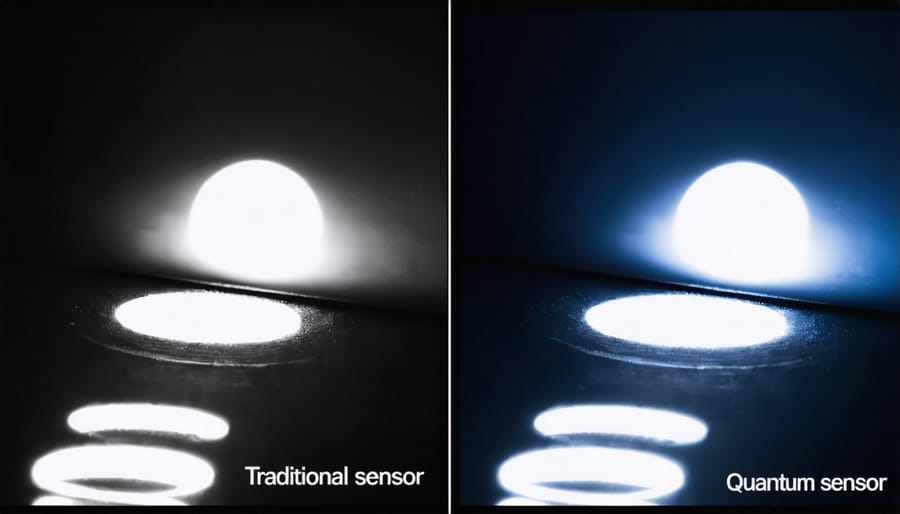
Enhanced Dynamic Range
Quantum sensors are revolutionizing how we capture light and detail in our images by dramatically expanding dynamic range in photography. Unlike traditional sensors that might struggle with extreme lighting conditions, quantum sensors can detect and process a much broader spectrum of light intensities simultaneously.
Imagine capturing a sunset where you can see both the brilliant colors in the sky and the intricate details in the shadowy foreground without any compromise. Quantum sensors make this possible by utilizing quantum entanglement principles, allowing them to detect individual photons with unprecedented precision. This means they can capture both very bright and very dark areas in a single exposure, eliminating the need for HDR bracketing in many situations.
The practical benefits are game-changing. Wedding photographers can now capture every detail of a white dress while maintaining the subtle textures in dark suits. Landscape photographers can record both deep shadow details in forest scenes and bright cloud highlights without losing information. The technology effectively doubles or even triples the usable dynamic range compared to conventional sensors.
What’s particularly exciting is how quantum sensors handle this expanded range without introducing additional noise or artifacts. The quantum detection process is inherently more accurate, resulting in cleaner transitions between light and dark areas and more natural-looking final images.
Faster Autofocus Capabilities
Quantum sensors are revolutionizing the way modern autofocus systems perform, offering photographers unprecedented speed and precision in their focusing capabilities. Unlike traditional phase-detection sensors, quantum sensors can detect and process light information at the atomic level, enabling them to calculate subject distance and movement with remarkable accuracy.
Think of it this way: while conventional AF systems might take multiple readings to confirm focus, quantum sensors can make these calculations almost instantaneously. This quantum leap in processing speed means your camera can track fast-moving subjects with virtually zero lag, making it a game-changer for sports and wildlife photographers.
The enhanced sensitivity of quantum sensors also dramatically improves low-light autofocus performance. Where traditional sensors might hunt for focus in dimly lit environments, quantum technology can maintain reliable autofocus even in challenging lighting conditions. This means you can capture sharp images during blue hour or indoor events without the frustrating focus hunting that photographers have long struggled with.
Another significant advantage is the improved accuracy in complex shooting scenarios. Quantum sensors can simultaneously track multiple subjects across the entire frame, predicting movement patterns with incredible precision. For wedding photographers capturing fast-paced reception moments or wildlife photographers following birds in flight, this technology ensures more keeper shots and fewer missed opportunities.
Real-World Benefits for Photographers
Landscape Photography Advantages
Quantum sensor technology is revolutionizing landscape photography by offering unprecedented capabilities in capturing the subtleties of natural scenes. These advanced sensors excel at detecting the finest gradations in light, making them particularly valuable during golden hour and blue hour shoots when light conditions change rapidly. The enhanced dynamic range allows photographers to capture both shadowy foregrounds and bright skies in a single exposure, reducing the need for bracketing or HDR techniques.
The quantum sensitivity to light also proves invaluable in low-light situations, such as capturing starlit landscapes or northern lights, where traditional sensors might struggle to gather sufficient detail. Photographers can now work with higher shutter speeds in challenging conditions, reducing the risk of motion blur from wind-blown vegetation or moving clouds.
Color accuracy is another significant advantage, with quantum sensors capable of detecting subtle variations in wavelengths that conventional sensors might miss. This results in more true-to-life representations of challenging subjects like autumn foliage or desert landscapes where subtle color transitions are crucial to the image’s impact. The technology’s precision also helps maintain detail in extreme weather conditions, making it easier to capture atmospheric elements like fog, mist, or rain while preserving landscape features.
Portrait Photography Improvements
Quantum sensor technology is revolutionizing how cameras capture and reproduce skin tones, bringing unprecedented accuracy and depth to portrait photography. These advanced sensors can detect subtle variations in skin undertones and lighting conditions that traditional sensors might miss, resulting in more true-to-life representations of diverse skin tones.
The enhanced sensitivity of quantum sensors allows for better handling of challenging lighting situations, particularly in mixed lighting conditions where skin can appear unnatural with conventional sensors. Portrait photographers will appreciate the improved ability to capture the nuanced interplay of light on facial features, from the softest highlights to the deepest shadows, without losing detail or introducing unwanted color casts.
One of the most significant improvements is the sensor’s ability to detect and process near-infrared light, which penetrates the skin’s surface differently than visible light. This capability helps reveal subtle textures and skin features while maintaining a natural, flattering appearance. The technology also excels at reducing noise in low-light situations, enabling photographers to shoot portraits in ambient lighting without compromising image quality.
The result is portraits that appear more three-dimensional, with improved depth and texture reproduction that better represents the subject’s natural appearance.
Action and Sports Photography Benefits
Quantum sensor technology is revolutionizing action and sports photography by enabling unprecedented capture speeds and precision. Imagine freezing the exact moment a baseball leaves the pitcher’s hand or capturing the subtle flex of a gymnast’s muscles during a complex routine – these scenarios are now possible with quantum-enhanced cameras.
The primary advantage lies in the sensor’s ability to detect photons with incredible efficiency, resulting in superior low-light performance during indoor sporting events or evening games. This means photographers can maintain faster shutter speeds without sacrificing image quality, even in challenging lighting conditions.
Sports photographers particularly benefit from the reduced motion blur and improved continuous shooting capabilities. The quantum sensors’ rapid readout speeds allow for burst modes that can capture up to hundreds of frames per second, ensuring you never miss that decisive moment in fast-paced action sequences.
The technology also enhances autofocus performance, with quantum sensors providing more precise depth information and faster focus acquisition. This proves invaluable when tracking fast-moving subjects across complex backgrounds, such as a soccer player weaving through defenders or a race car approaching a turn.
Moreover, the reduced latency between captures means less time spent waiting for the buffer to clear, allowing photographers to stay focused on the action. This technological advancement is particularly game-changing for professional sports photographers who need to deliver images in real-time for live coverage.
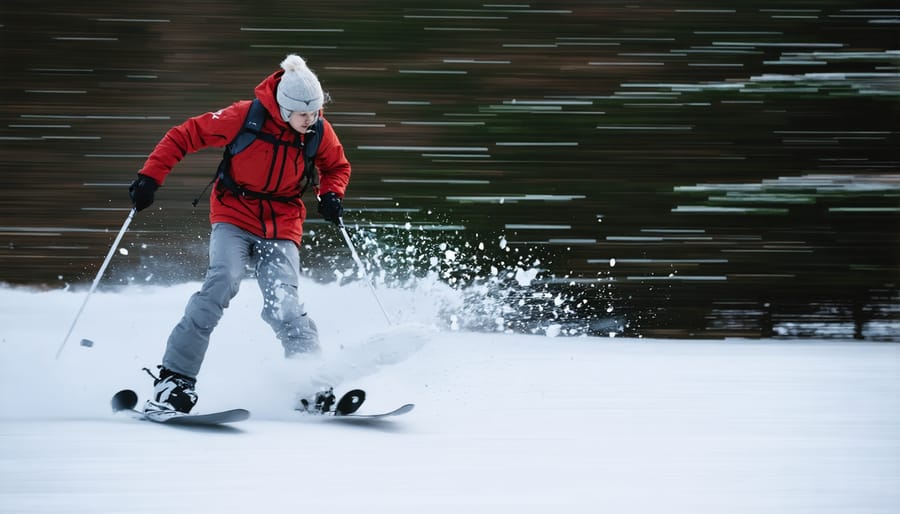
Future Implications and Development
As we look toward the horizon of quantum sensor technology, the photography industry stands on the brink of a revolutionary transformation. Emerging developments in quantum-enhanced imaging systems promise to push the boundaries of what’s possible in low-light photography and microscopic detail capture. These advancements will fundamentally change how we approach lens and sensor compatibility, potentially leading to completely new lens designs optimized for quantum detection.
Industry experts predict that within the next five years, we’ll see the first consumer-grade cameras incorporating basic quantum sensing elements, particularly for enhanced light sensitivity and reduced noise in challenging conditions. This technology could make night photography as clear and detailed as daytime shoots, without the current limitations of high ISO settings.
Another exciting prospect is the development of quantum-assisted focus systems that could detect and track subjects with unprecedented accuracy, even in complete darkness. Imagine being able to capture perfect focus on birds in flight during dawn or dusk, or shooting crystal-clear street photography in near-darkness.
The medical and scientific imaging sectors are likely to be early adopters, with quantum sensors enabling new forms of non-invasive imaging and microscopy. These advances will eventually trickle down to consumer photography, bringing professional-grade capabilities to enthusiast-level equipment.
While these developments are promising, manufacturers are working to address challenges like cost-effectiveness and system stability at normal operating temperatures. As these hurdles are overcome, we can expect to see quantum sensor technology become increasingly accessible to photographers at all levels.
Quantum sensor technology represents a transformative leap forward in photography, promising to revolutionize how we capture and interpret light. As these sensors become more accessible, photographers can look forward to improved low-light performance, faster autofocus capabilities, and unprecedented precision in exposure metering. The ability to detect individual photons opens up new creative possibilities, particularly in challenging lighting conditions where traditional sensors struggle.
For photographers considering future equipment upgrades, keeping informed about quantum sensor developments will be crucial. While the technology is still emerging, early adoption could provide a significant competitive advantage, especially for those working in specialized fields like astrophotography or scientific imaging. The enhanced sensitivity and reduced noise levels offered by quantum sensors could make previously impossible shots achievable.
Looking ahead, we can expect quantum sensors to become increasingly common in professional camera systems. Their integration will likely lead to smaller, more efficient cameras without compromising image quality. For the everyday photographer, this means better performance, increased creative freedom, and the ability to push the boundaries of what’s possible in digital photography.
